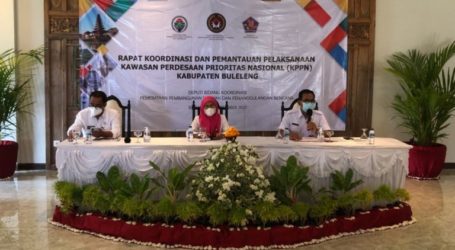Lebaran Exodus or Mudik Phenomenon and Several Aspects Behind It

Jakarta, 28 Ramadan 1437/04 July 2016 (MINA) – The annual Idul Fitri exodus, locally known as mudik, was expected to have reached its peak in Jakarta over the last weekend, as millions of Jakartans were exiting the capital city by various means of transportation.
The Jakarta Transportation Agency has predicted that up to 6.7 million Jakartans will leave the city to return to their hometowns on Saturday and Sunday, Jakarta Transportation Agency chief Andri Yansyah said.
The Lebaran exodus or mudik phenomenon is an annual event that distinctively characterises Indonesian Muslims as a nation.
The annual Lebaran exodus of Indonesian migrant workers, street vendors and professionals from the cities back to their hometowns – to spend some days with their parents – ahead of Idul Fitri (Lebaran) is called mudik in Indonesian.
Fasting in Ramadhan and celebrating Idul Fitri are commonly observed by Muslims all over the globe, yet the mass homecoming or mudik is uniquely characteristic of Indonesians.
Despite the difficulties for most people of returning to their hometowns for the annual holiday because of traffic and poor infrastructure, Indonesians look forward to being united with their families, friends and relatives to celebrate a joyous Idul Fitri. In its spiritual aspect, it generates a new freshness which infuses people with new gusto when they return to their routine work in big cities.
The Transportation Ministry of Indonesia predicts that there will be 17,7 million people traveling back to their places of origin ahead of this year’s Idul Fitri celebrations (the days that mark the end of the Ramadan fasting month).
This prediction is slightly higher than the flow of people during last year’s Idul Fitri (17.4 million), Antara reported.
Pudji Hartanto, Director General of Land Transport at the Indonesian Transportation Ministry, believes that air passengers will show the highest growth this year amid the mudik tradition.
The government estimates that 4.64 million Indonesians will use air transportation to travel back to their places of origin, which would be up 7.62 percent (y/y) from 4.32 million air travelers during last year’s mudik.
This year’s number of train passengers is expected to reach 4.11 million, up 4.63 percent (y/y) from 3.9 million train passengers during last year’s mudik. Meanwhile, the number of people who use bus transportation is expected to decline 2.7 percent (y/y) to 4.57 million because the government detects a trend that mudik travelers prefer air and train transportation over buses.
Passengers using ferry transportation for this year’s mudik are expected to rise 3.5 percent (y/y) to 3.75 million, while passengers that use sea transportation are estimated to grow 3.0 percent (y/y) to 910,191 individuals.
Clogged roads
Indonesia’s Transportation Ministry offers free bus and train transportation for those travelers who have difficulty to finance the trip but also in an effort to smoothen the flow of travelers (the government advises people to use public transportation rather than undertaking private traveling in order to relieve pressure on the transportation infrastructure).
Through the website mudikgratis.dephub.go.id people can register for these services (registration is possible between 13 May and 12 June 2016). Offline registration is also possible in specific points in Jakarta, Tangerang, Depok and Bekasi.
The government offers 24,000 free seats in buses for mudik travelers. In trains it allows 12,000 motorcycles (one motorcycle per traveler). Total costs of this government program are estimated at IDR 20 billion (approx. USD $1.5 million).
With millions of people traveling around the Idul Fitri days, the roads around the bigger cities and ports of Indonesia (for example the Merak port in Banten province, a port used to travel to Sumatra) tend to be clogged resulting in hours-long traffic jams.
The number of traffic fatalities also usually rises in this period.
Magnet of urban life
The government estimates that more than 19 million people will have left cities and towns by the time Ramadhan ends next week, while Jakarta’s population of 11 million will be halved this time this week.
At least for the couple days of Idul Fitri, mega cities such as Jakarta will almost be a ghost town.
It is also interesting to point out that the mudik tradition gives rise to an enormous boost in the money circulattion across the Archipelago as millions of people travel to the rural areas to spend some days with their families.
It is estimated that these people carry trillions of rupiah (hundreds of millions of US dollars) with them to the rural regions (also supported by workers’ 13-month salary payout).
As consumption increases (on food products, but also on clothes, bags, and shoes) there usually occurs a peak in inflation around the Ramadan and Idul Fitri celebrations.
During the Mudik period people will exchange information about job opportunities in big cities that will cause increase in urban populations every year. Domestic helpers often bring along two or three relatives to join the “urban success story”.
Urban life always brings an illusion of new lifestyle and new hopes.
Mudik is certainly a unique phenomenon that may exists only in Indonesia. (T/R07/R01)
Mi’raj Islamic News Agency (MINA)




